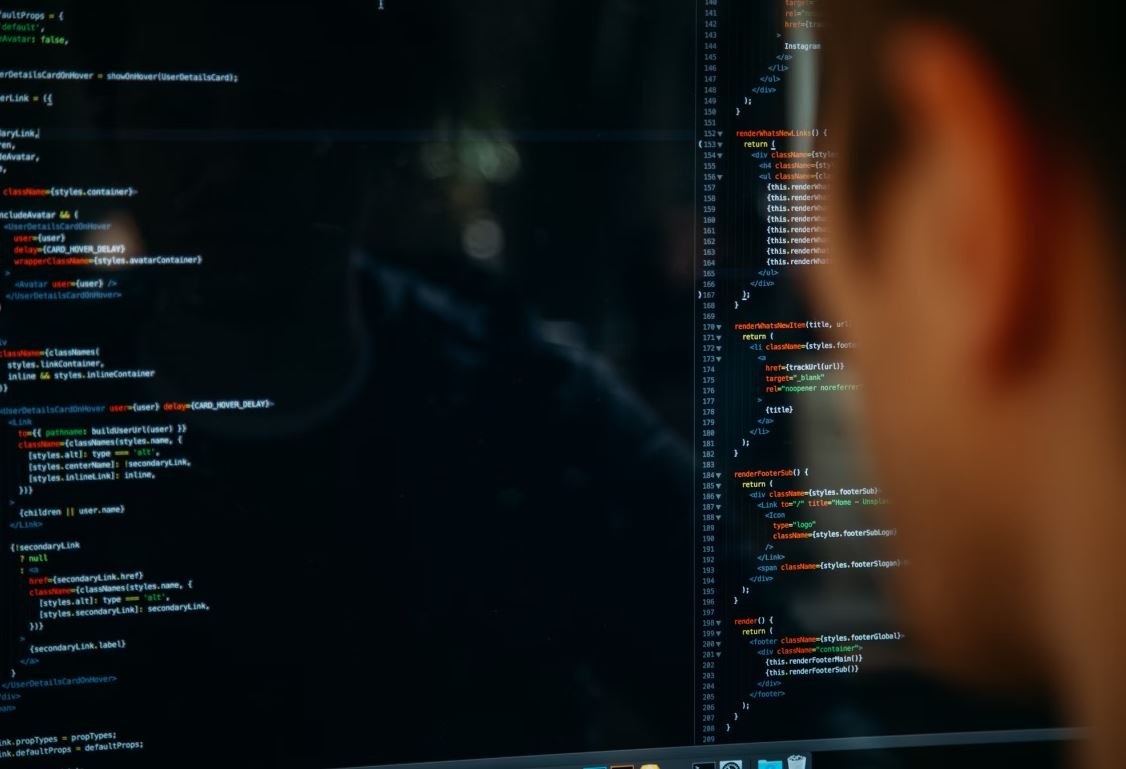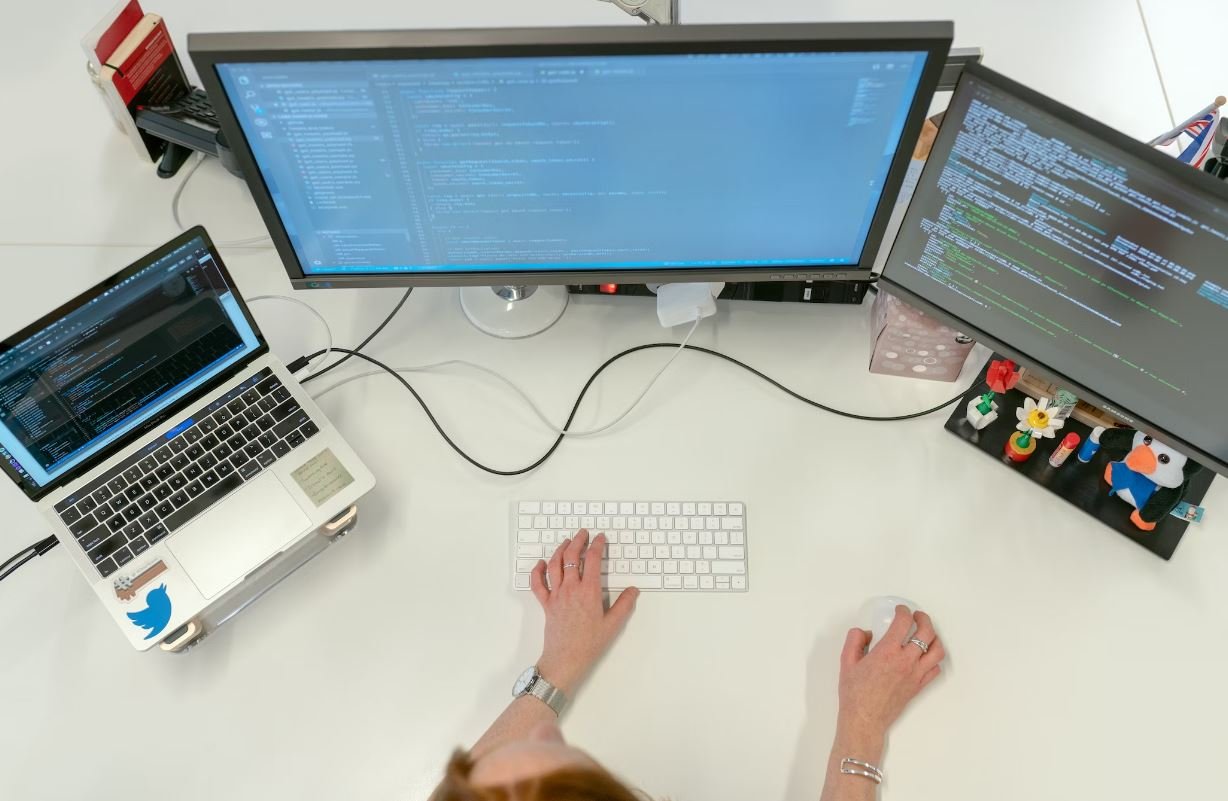Generative Art Applications
Generative art is a fascinating field that combines creativity and technology to produce unique and unpredictable artwork. It involves using algorithms, random numbers, and a set of predefined rules to generate art that can take various forms, including images, animations, and music. Over the years, generative art has found numerous applications in various industries, ranging from design and advertising to gaming and beyond. In this article, we will explore some of the key applications of generative art and its potential in the world of creativity and innovation.
Key Takeaways:
– Generative art uses algorithms and rules to create unique and unpredictable artwork.
– It has applications in industries such as design, advertising, and gaming.
– Generative art can enhance user experiences by creating interactive and dynamic content.
– It can be used for data visualization and exploration, adding an artistic dimension to complex data sets.
– Generative art offers opportunities for creative expression and exploration of new artistic territories.
Generative art finds its applications in a wide range of industries, where it adds a new dimension of creativity to various processes. In the world of design, generative art can be used to create visually stunning graphics, logos, and patterns that can be easily customized and tailored to individual needs. Advertisements can benefit from generative art by creating dynamic and interactive content that captures users’ attention and encourages engagement with the brand.
*One interesting use of generative art in the gaming industry is the creation of procedurally generated worlds, where landscapes, characters, and even storylines are dynamically generated based on a set of rules and algorithms, resulting in a unique gameplay experience every time.*
Generative art can also play a significant role in data visualization, transforming complex datasets into visually appealing and easy-to-understand representations. By utilizing generative algorithms, data can be transformed into interactive and dynamic visuals that allow for exploration and discovery. This not only enhances the user experience but also facilitates the identification of patterns and trends that may not be immediately evident in raw data.
| Industry | Application |
|---|---|
| Design | Customizable graphics and patterns |
| Advertising | Interactive and dynamic content |
| Gaming | Procedurally generated worlds |
Additionally, generative art offers a fertile ground for creativity and exploration, enabling artists to delve into uncharted territories. Artists can use generative algorithms to create a starting point for their work, injecting randomness and unpredictability into the artistic process. This not only sparks new ideas but also challenges conventional artistic methods and opens doors to novel techniques and styles.
Furthermore, generative art can be utilized as a means of artistic expression, enabling artists to create visually captivating and conceptually rich pieces. The amalgamation of artistic intuition and computational algorithms can result in artwork that reflects the artist’s vision while incorporating elements of chance and algorithmic decision-making.
*An intriguing aspect of generative art is its ability to bridge the gap between creativity and technology, highlighting the coexistence of human intuition and machine intelligence.*
Generative art has the potential to revolutionize the creative landscape, offering fresh perspectives and limitless possibilities for artists, designers, and innovators alike. By harnessing the power of algorithms and embracing randomness, generative art can inspire new visual experiences, simplifies complex data exploration, and pushes the boundaries of artistic expression.
Applications of Generative Art:
- Design: Customizable graphics and patterns.
- Advertising: Interactive and dynamic content.
- Gaming: Procedurally generated worlds.
- Data Visualization: Transforming complex data into visually appealing representations.
- Artistic Expression: Bridging creativity and technology to create conceptually rich artwork.
| Advantages of Generative Art | Challenges |
|---|---|
|
|
In conclusion, generative art applications are vast and varied, making it an exciting and innovative field with immense potential. From design to gaming, advertising to data visualization, and artistic expression, generative art brings a new level of creativity and exploration to numerous industries. By embracing algorithms, randomness, and rules, generative art pushes the boundaries of human imagination and fosters innovation, bridging the gap between creativity and technology. So, if you’re looking to add a touch of uniqueness and unpredictability to your creative endeavors, dive into the world of generative art and unlock new realms of artistic possibilities.

Common Misconceptions
Misconception 1: Generative art applications require advanced coding skills
One common misconception about generative art applications is that they can only be utilized by individuals with advanced coding skills. While it is true that some generative art platforms do require coding knowledge, there are also many user-friendly applications available that allow anyone to create generative art without any coding expertise.
- Many generative art applications offer intuitive drag-and-drop interfaces
- Templates and pre-built algorithms make it easy for beginners to get started
- Online communities and tutorials provide resources for learning without coding
Misconception 2: Generative art applications lack creativity and originality
Another misconception is that generative art applications produce repetitive and unoriginal artwork. However, generative art is not limited to repetitive patterns, and there are numerous ways to inject creativity and originality into generative art.
- Artists can experiment with different parameters and algorithms to create unique outcomes
- Tools like randomization, noise, and user input can add unexpected elements to the artwork
- Artists can combine generative art with other artistic techniques for a more diverse and original result
Misconception 3: Generative art applications are only for professional artists
Some people may believe that generative art applications are exclusive to professional artists and designers. However, many generative art platforms are designed to cater to artists of all levels, including beginners and hobbyists.
- Generative art applications provide accessible tools and features for inexperienced artists
- Community platforms allow artists to share their work and receive feedback from others
- Tutorials and online resources cater to artists who are new to generative art
Misconception 4: Generative art applications limit artistic control
Another misconception is that using generative art applications restricts an artist’s control over the creative process. However, generative art applications actually offer a unique way for artists to explore new possibilities and expand their artistic control.
- Artists can define the parameters and rules of generative algorithms, giving them control over the outcome
- Generative art can be interactive, allowing users to influence the artwork in real-time
- Artists can modify and experiment with algorithms to achieve desired results
Misconception 5: Generative art applications lack practical applications
Some individuals may mistakenly believe that generative art applications have limited practical applications and are only used for creating abstract or decorative artwork. However, generative art has found practical applications in various fields beyond just aesthetic expression.
- Generative art can be used in data visualization and analysis
- In architecture, generative design can help in creating innovative structures
- Generative art can be applied to game design, animation, and interactive media

Introduction
Generative art is a form of art that is created using algorithms and computer code. It holds immense potential for various applications, from creating intricate graphics to designing unique patterns. This article explores different instances of generative art applications, showcasing their versatility and captivating visual outputs.
Aesthetic Patterns
Generative art has the ability to produce visually stunning patterns that appeal to our aesthetic senses. This table presents a selection of remarkable generative patterns, showcasing the diversity and intricacy achievable through this art form.
Fractal Complexity
Fractals are intricate, self-replicating patterns that exhibit complex geometrical structures. This table demonstrates the astounding complexity of fractals, highlighting their recursive nature and the resulting mesmerizing visuals they generate.
Evolutionary Algorithms
Evolutionary algorithms utilize principles inspired by natural selection to optimize and create designs. The table below showcases examples of generative art generated through evolutionary algorithms, emphasizing the ability to produce novel and optimized designs through a simulated evolutionary process.
Artistic Expressions
Generative art provides a platform for artistic expressions that extend beyond traditional manual creation. The following table represents a range of artistic expressions achieved through generative art techniques, showcasing the diversity and unique characteristics of these creations.
Data Visualization
Generative art can be utilized to transform complex data sets into engaging visual representations. This table displays instances where generative art has been harnessed to visualize different datasets, illustrating the potential for data communication through visually appealing designs.
Interactive Installations
Generative art can seamlessly merge with technology to create interactive installations that captivate audiences. The table below exhibits a collection of interactive installations that combine generative art with various sensors and interactivity, creating immersive environments for viewers.
Architectural Designs
Generative art can also be applied in architectural design, offering new possibilities for innovative structures. This table presents examples of generative architectural designs, showcasing the unique forms and unconventional aesthetics made possible through the integration of generative art principles.
Virtual Reality Experiences
Generative art can be experienced in virtual reality, transporting viewers into immersive digital worlds. The following table features generative art experiences in virtual reality, illustrating the surreal and visually captivating environments that can be explored.
Motion Graphics
Generative art is not limited to static images but can also be used in motion graphics. This table displays examples of generative motion graphics, demonstrating the dynamic and ever-changing nature of generative art when set in motion.
Conclusion
Generative art applications open up exciting possibilities across various fields, ranging from artistic expressions to architectural designs and data visualization. The tables above provide a glimpse into the versatility and captivating nature of generative art, showcasing its potential to create beautiful and engaging visual experiences. Through the use of algorithms and computational techniques, generative art continues to push the boundaries of creativity, inspiring new innovations in the realm of visual design.
Frequently Asked Questions
Question: What is generative art?
Generative art refers to artwork that is created through the use of algorithms or computer code. It relies on mathematical rules or random processes to generate unique and original pieces of art.
Question: How is generative art different from traditional art?
Traditional art is typically created using manual techniques, such as painting or sculpting, whereas generative art is created using algorithms and computer programming. Generative art often involves an element of randomness or interactivity, creating dynamic and ever-changing artwork.
Question: What are some applications of generative art?
Generative art can be used in various creative fields, such as visual arts, music, architecture, fashion, and advertising. It can be used to create unique designs, patterns, visuals, or even interactive installations.
Question: What programming languages are commonly used in generative art?
Popular programming languages for generative art include Processing, JavaScript, Python, and Max/MSP. Each language has its own strengths and libraries that enable artists to create unique and visually stunning generative art.
Question: Can generative art be considered fine art?
Yes, generative art can be considered fine art. Many galleries and museums exhibit generative art installations and artworks. It is recognized as a legitimate form of artistic expression and is valued for its innovative and technological approach.
Question: How does generative art inspire creativity?
Generative art encourages artists to explore new ways of creating, often challenging traditional techniques and approaches. The use of algorithms and random processes can lead to unexpected and unique outcomes, fostering a sense of exploration and experimentation.
Question: Can generative art be interactive?
Yes, generative art can be interactive. Artists can create installations or applications where users can interact with the artwork using various input methods, such as touch, sound, or motion. This interaction can result in dynamic and evolving visual experiences.
Question: Are there any famous generative artists?
Yes, there are several well-known generative artists, such as Casey Reas, Marius Watz, Manfred Mohr, and Vera Molnar. These artists have made significant contributions to the field of generative art and have showcased their work in galleries and exhibitions worldwide.
Question: Can generative art be used commercially?
Yes, generative art can be used commercially. Many companies and brands incorporate generative art into their advertising campaigns, product designs, and visual identity. The unique and visually captivating nature of generative art can help businesses stand out and create memorable experiences for their customers.
Question: How can I start creating generative art?
To start creating generative art, you can begin by learning a programming language like Processing or JavaScript. There are also online tutorials, courses, and communities dedicated to generative art that can provide guidance and inspiration. Experimentation and practice are key to developing your skills and finding your own creative voice in generative art.




